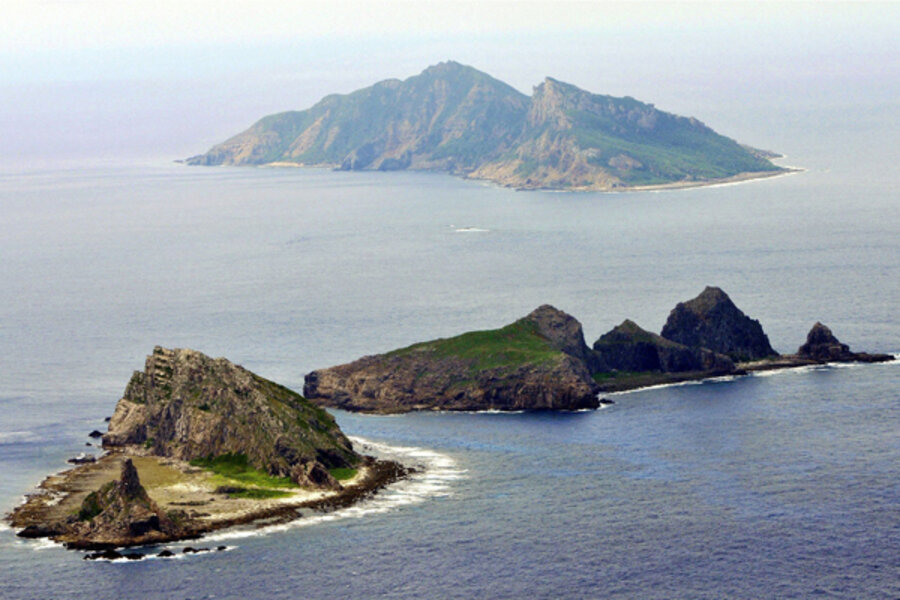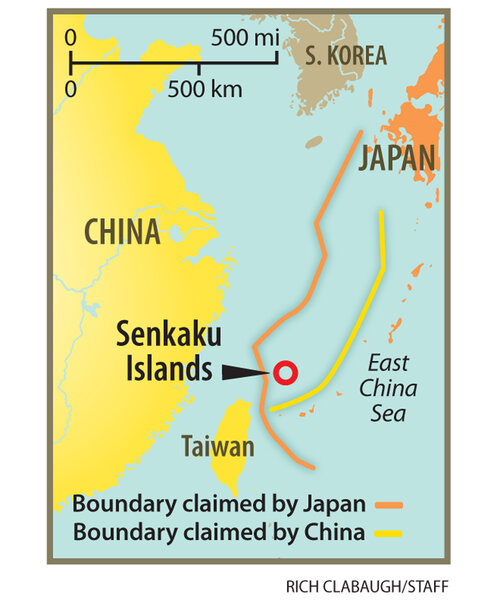What's behind the China - Japan island dispute?
Loading...
| TOKYO
The dispute over the Senkaku Islands, five islets and three rocky outcroppings, revolves around who got there first. China calls them the Diaoyu Islands and dates its authority there to the 14th century. Japan annexed them in 1895 after finding them uninhabited. Here's a basic breakdown of the dispute.
What is Japan's claim?
Japan's foreign ministry cites surveys in 1885 confirming they were "uninhabited" with "no trace of having been under the control of China." The government of Japan in January 1895 decided to incorporate the islands and to place a marker on one of them declaring them to be part of Japan.
But what do the Japanese say to the Chinese claim that the islands appear on Ming Dynasty maps?
Neither the Communist government that had taken over the Chinese mainland in 1949 nor the "Nationalist" Chinese government, driven to the island province of Taiwan, objected when the San Francisco Peace Treaty of 1951 placed the islands under US administrative control.
Why were the Americans in charge?
US forces drove the Japanese from the island prefecture of Okinawa in June 1945 in the worst Pacific battle of World War II. The islands, 220 miles southwest of Okinawa, had been governed by Okinawa under the Japanese.
When did the Chinese begin to state their claims?
The governments in Beijing and Taiwan got interested in 1970 after a United Nations study showed there might be oil and gas in the seabed around the islands. The island cluster is 76 miles from Taiwan, 92 miles from the closest Japanese island, also a part of Okinawa prefecture, and 100 miles from the coast of China.
When did Japan resume governing the islands?
Japan regained governing control in 1972 under the "reversion" of Okinawa to Japan. Since then, Japanese Coast Guard boats have been on regular patrol to prevent intrusion, mostly by Chinese fishing boats.
If Japan is so confident of its control, why do Japanese authorities keep visitors off the islands?
Japan is eager to tamp down the controversy, to retain control over the islands and surrounding waters but not to incite China.
Have the islands ever served any commercial purpose?
An enterprising Japanese buisnessman built up a facility on one of the islands for processing the bonito, a valuable fish that's abundant in nearby waters. He employed about 200 workers in the factory. The business survived for 50 years but finally failed in 1940 while imperial Japanese forces were reigning supreme over much of China, the Korean Peninsula, and Southeast Asia more than a year before bombing Pearl Harbor.
Who actually owns the islands?
The original official owner was the man who set up the fish plant. His family sold the islands to another family, and they lease them to the Japanese government. The US leases one of the islands from Japan as a firing range for jet fighters but stopped using it for target practice more than 30 years ago.
Are the islands uninhabitable or might tourism and investment some day be possible?
The islands are covered by jungle. There are no rivers, and fresh water from rainfall would be at a premium. Certain wildlife exists, however, including rare species of moles and ants. Small goats, introduced more than 30 years ago, have multiplied and become a threat to vegetation.
What about the proposal by Tokyo Gov. Shintaro Ishihara to buy the islands? Will that help or hinder development?
That's viewed as a right-wing gesture that's extremely upsetting to the Chinese. Japanese authorities don't want him to do anything with the islands. Some day, however, entrepreneurs might build resorts and fish processing plants – and oil interests might set up facilities if exploration reveals deposits.
Might it be possible to resolve this dispute through negotiations – or perhaps a decision by the International Court of Justice?
China and Taiwan are equally adamant about the Chinese claim to the islands. There appears to be no middle ground.
As one Japanese bureaucrat puts it, "There's no dispute – the Senkakus are ours."






